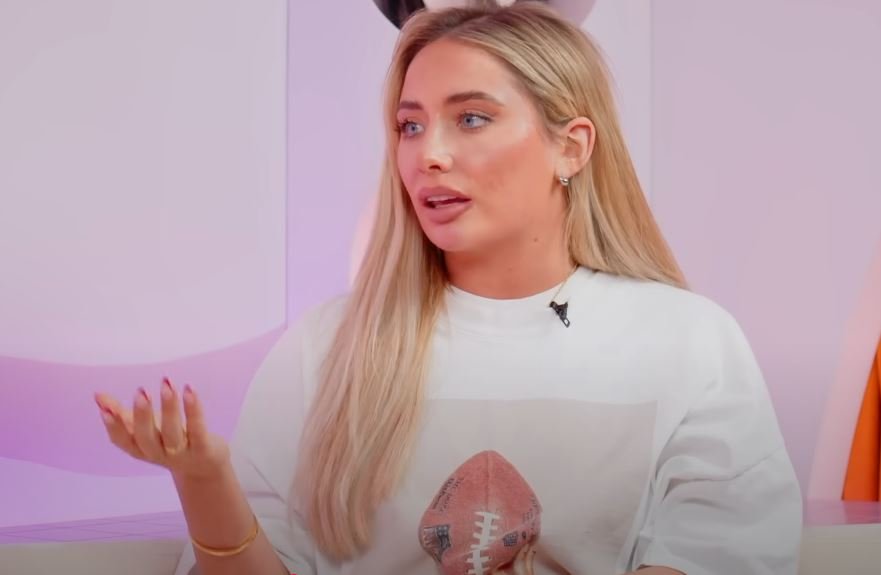Particularly among Gen Z, the terms “lit,” “dope,” and “sick” have been repurposed with remarkable elasticity. Originally derived from street slang, they have developed into shorthand for enthusiasm, style, and approval, with each word having a positive connotation. A “sick” dance move, a “dope” sneaker drop, or a “lit” concert are all indicators of things that go above and beyond. However, when “dope sick” is added, the tone drastically changes. All of a sudden, you are describing suffering rather than celebrating. This linguistic flip highlights a deeper tension between public health and pop culture, which frequently run parallel to one another before abruptly colliding.
Discussions about this disparity have accelerated in recent weeks, especially as digital slang keeps becoming more prevalent in everything from advocacy to advertising. The term “dope sick,” as used in clinical contexts, refers to the severe withdrawal symptoms experienced by an opioid addict who stops using. These symptoms are more than just inconvenient; they can include anything from intense nausea to muscle aches and hallucinations. They are incapacitating. Nevertheless, you might scroll past a social media post that says, “That beat is dope sick,” combining amusement and suffering into one sentence. That collision can be particularly confusing for someone in recovery.
Lit Dope Sick – Term Clarity Table
| Term | Meaning & Context |
|---|---|
| Lit | A modern compliment suggesting excitement, energy, or excellence |
| Dope | A versatile slang term used to praise something cool, original, or impressive |
| Sick | Used to describe something notably awesome or eye-catching |
| Dope Sick | Refers to opioid withdrawal symptoms, often including fever, vomiting, and depression |
| Cultural Use | Common in music, streetwear, TikTok, and memes |
| Medical Use | Officially used in addiction treatment and mental health literature |
| Source Reference | https://www.litcharts.com/lit/dopesick/terms/dope-sick |
The term “dope sick” has been reclaimed in a significantly different context during the last ten years. With remarkable clarity, Beth Macy’s Dopesick—later turned into a dramatized miniseries on Hulu—opened the national dialogue about the opioid crisis. In addition to addiction, the story focused on the systemic and corporate failures that fostered it. Although the slang term “dope” conveys flair and uniqueness, its closeness to real opioid use draws attention to a cruel irony. There is a disconnect between perception and consequence—between humor and reality—when slang language casually incorporates medical terms.
These terms have two meanings in the educational community, particularly among high school and college students. During health class, a student may jokingly refer to a pair of shoes as “sick,” only to discover that the same term can also refer to someone who is shaking in agony due to opioid withdrawal. Teachers, clinicians, and counselors are all attempting to establish a space where language can be expressive and appropriately contextualized as a result of this semantic overlap. For many, teaching slang’s depth is more important than censoring it.
Client engagement is significantly increasing in many addiction recovery programs by using familiar language as a teaching tool. It heals a rift when someone enters a center and is told, “You’re dope sick—we know how that feels.” It states that we are connected and not just clinical. One of the most enduring obstacles to addiction recovery is shame, which can be overcome with the help of that type of communication. Being emotionally approachable is just as important as being medically accurate.
Music and entertainment reflect the shift of these words from praise to pain. Rappers like Juice WRLD and Mac Miller, who both passed away from drug-related causes, frequently used the words “dope” and “sick” in complex ways, incorporating heartbreak and humor into their verses. On first listen, their songs sounded like fun, but after their deaths, the depressing undertones became more apparent. Fans, particularly young ones, find comfort in language that affirms both euphoria and struggle, so this duality speaks to them.
Marketing firms have been using Gen Z’s slang-heavy speech, sometimes awkwardly, in recent years. Sometimes, brands that want to come across as “lit” or “dope” fall into tone-deaf territory because they don’t understand the significance of certain words. For instance, it would be extremely insensitive and detrimental to use the phrase “dope sick” in a product pitch. To make sure that edgy doesn’t turn exploitative, cultural consultants are being hired as more brands try to connect through language.
Many young adults discovered that they were using recovery-related language more frequently during the pandemic, when substance abuse and isolation increased. Terms like “dope sick” became more widely known thanks to online forums and digital support groups, which demythologized them through common experiences. “I used to say ‘dope sick’ as a joke,” one recovering user wrote on Reddit. I say it now, fully aware of its meaning. It’s survival, not just slang.
Social media platforms have begun to provide more embedded education through strategic alliances with health organizations. For example, users may now see a kind pop-up urging them to read more or get help when they search for “dope sick” on Instagram or TikTok. Even though the change is slight, it’s a step in the right direction toward recognizing that our language is dualistic, with a single phrase having the dual meanings of excitement and exhaustion.







